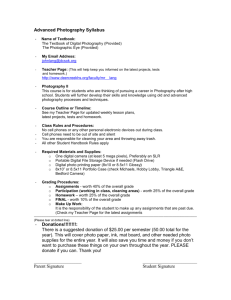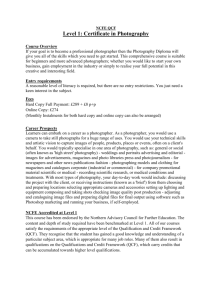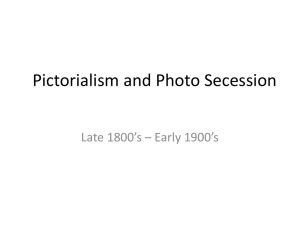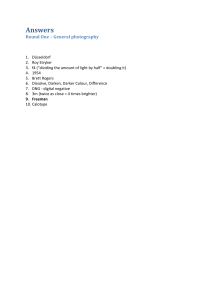2011-12 Midterm Study Guide Photography
advertisement
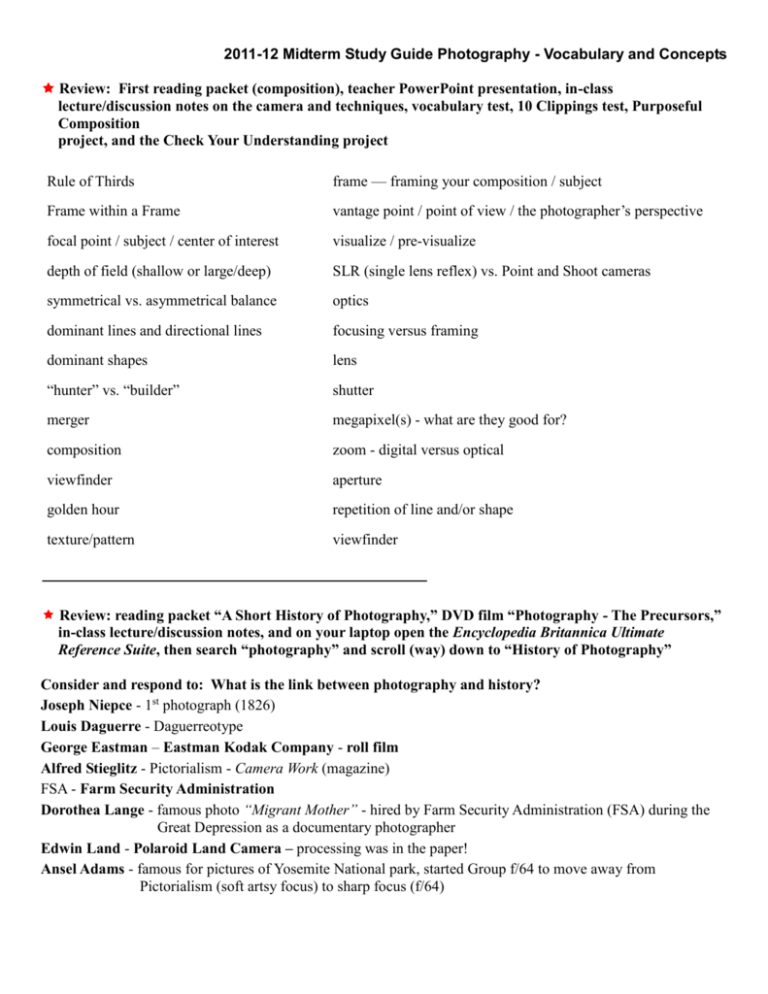
2011-12 Midterm Study Guide Photography - Vocabulary and Concepts Review: First reading packet (composition), teacher PowerPoint presentation, in-class lecture/discussion notes on the camera and techniques, vocabulary test, 10 Clippings test, Purposeful Composition project, and the Check Your Understanding project Rule of Thirds frame — framing your composition / subject Frame within a Frame vantage point / point of view / the photographer’s perspective focal point / subject / center of interest visualize / pre-visualize depth of field (shallow or large/deep) SLR (single lens reflex) vs. Point and Shoot cameras symmetrical vs. asymmetrical balance optics dominant lines and directional lines focusing versus framing dominant shapes lens “hunter” vs. “builder” shutter merger megapixel(s) - what are they good for? composition zoom - digital versus optical viewfinder aperture golden hour repetition of line and/or shape texture/pattern viewfinder Review: reading packet “A Short History of Photography,” DVD film “Photography - The Precursors,” in-class lecture/discussion notes, and on your laptop open the Encyclopedia Britannica Ultimate Reference Suite, then search “photography” and scroll (way) down to “History of Photography” Consider and respond to: What is the link between photography and history? Joseph Niepce - 1st photograph (1826) Louis Daguerre - Daguerreotype George Eastman – Eastman Kodak Company - roll film Alfred Stieglitz - Pictorialism - Camera Work (magazine) FSA - Farm Security Administration Dorothea Lange - famous photo “Migrant Mother” - hired by Farm Security Administration (FSA) during the Great Depression as a documentary photographer Edwin Land - Polaroid Land Camera – processing was in the paper! Ansel Adams - famous for pictures of Yosemite National park, started Group f/64 to move away from Pictorialism (soft artsy focus) to sharp focus (f/64) 2011-12 Midterm Study Guide Photography - Vocabulary and Concepts Henri Cartier-Bresson – father of modern photojournalism, co-founder of Magnum Photos, known for his concept of the “decisive moment” Calotype – Henry Fox Talbot – first negative-positive process, from one negative a large number of positive prints could be made Wet-collodion process – Scott Archer – produced at sharper negative than the calotype, but required a portable darkroom to keep the plates wet (they had to be used immediately) Dry-plate process – retained light-sensitivity after drying. More convenient than wet-collodion process From reading packet “Photography, Ethics, and the Law,” and in-class lecture/discussion - Review your test on this info too! 4 Types of Invasion of Privacy — appropriation, intrusion, publication of private matters, false light expectation of privacy copyright documentary vs. trade/advertising — the rules regarding manipulation of content libel ethical vs. legal where/what can and cannot be photographed Re-read your Photo Critique and be prepared to write one on test day Three paragraphs: Literal Level - describe the photo in detail, Compositional Content Level - describe the composition and photographic techniques, Meaning Level - describe why you think the photographer may have taken the photo





